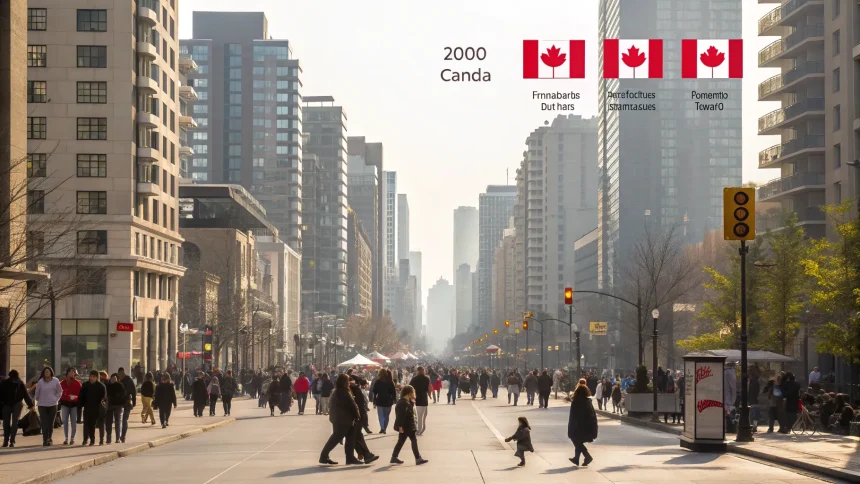Canada’s surge in population is reshaping daily life, from the price of rent to the wait for a family doctor. With businesses seeking workers and households squeezed by housing costs, policymakers face tough choices that will shape the economy and social programs in the years ahead.
The core story is simple: rapid population growth is pushing up demand while supply struggles to catch up. The pressure is felt most in housing and health care. It also ripples through labor markets, pension funding, municipal budgets, and infrastructure planning.
Why Population Growth Matters Now
Canada has relied on newcomers and natural growth to support an aging society. A larger working-age population can help fund public programs, fill job vacancies, and spur new businesses. But growth moves faster than construction permits, clinic capacity, and transit expansions.
Housing supply takes years to build. Hospitals and primary care networks need funding, space, and staff. Cities must plan water, transit, schools, and roads. When growth outruns that planning, costs rise and service quality can slip.
Housing Market Pressures
Rents have risen as more people compete for scarce units. Homebuyers face tight listings and higher carrying costs, even as new construction tries to catch up. Developers cite long approval timelines, zoning limits, and rising material costs. Local leaders point to land-use rules and neighborhood concerns that slow projects.
Economists warn that underbuilding today adds to future costs. Overcrowding and long commutes reduce productivity and household stability. Builders argue that approvals, skilled trades, and financing must align to increase completions.
Business Needs And Labor Supply
Employers in construction, health care, and technology say growth helps fill key roles. Some report that new workers reduce hiring delays and allow expansion. Others note that tight housing makes it hard to recruit to high-cost cities. Wage pressures remain uneven, with shortages in specialized trades and care roles.
Productivity remains a concern. New workers help output, but firms need investment in tools, training, and infrastructure to raise output per worker. Without those investments, growth can increase total GDP while leaving per-person gains modest.
Pensions, Aging, And The Tax Base
A growing workforce strengthens the contribution base for public pensions and old-age benefits. More contributors support payments to retirees. Yet demographic trends still point to a rising share of seniors who rely on income support and care.
Policy experts argue for clear targets that match labor market needs and housing capacity. Small shifts to retirement age, contribution rates, or benefit formulas can ease long-term pressure. Transparency helps maintain public trust.
Health-Care Capacity And Costs
Primary care access is tight in many regions. Hospitals report crowding and staffing shortages. Adding patients without adding providers stretches wait times and increases strain on emergency rooms.
Health leaders say the fastest wins come from expanding team-based clinics, accrediting foreign-trained professionals more quickly, and improving data systems. Longer term, training more nurses, doctors, and personal support workers is essential.
What Coordination Looks Like
Growth can work if governments and industry move in step. The key is aligning immigration targets, housing plans, and service capacity so communities can absorb new residents without eroding quality of life.
- Set housing starts and infrastructure funding to match population targets.
- Speed up approvals while maintaining building standards and safety.
- Expand health-care staffing through faster licensing, training seats, and retention incentives.
Signals To Watch
Rent growth and vacancy rates will show whether supply is catching up. Time-to-approval for new projects will reveal if reforms work. Family doctor attachment rates and emergency room wait times will indicate health-system capacity. Business investment per worker will point to productivity trends.
Policymakers will be judged on whether they can turn strong population growth into higher living standards. The balance is delicate. If housing and services expand in time, the gains can be widely shared. If they lag, costs will rise and public support for growth may fade.
Canada’s next phase will hinge on execution: building enough homes, hiring and training enough care providers, and giving businesses the tools to invest. The stakes are high, and the timeline is short.







